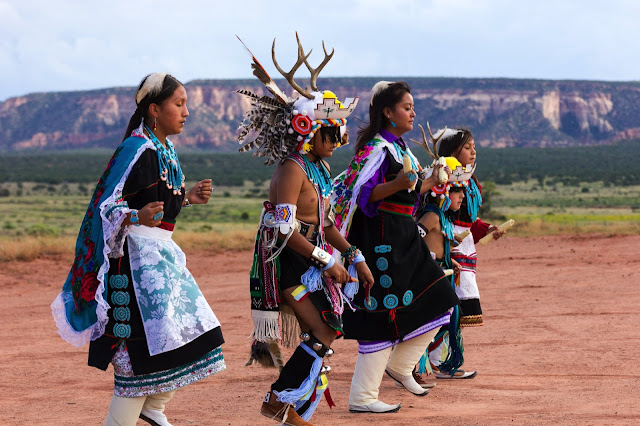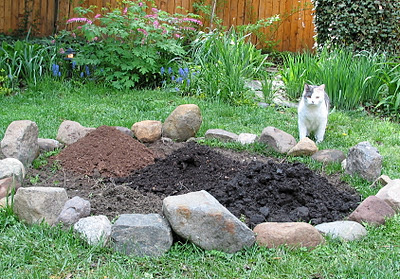Terra Madre 2004
Written for Sierra magazine in 2004. For more on topics like this, see my book, American Apartheid: The Native American Struggle....
 “If this is madness, let’s have more of it,” said Carlo Petrini, founder and director of Slow Food, the Italian gastronomic organization. He was addressing a plenary session of Terra Madre 2004, a four-day conference in Turin, Italy, to which his group had invited 5,000 small food producers from 131 countries.
“If this is madness, let’s have more of it,” said Carlo Petrini, founder and director of Slow Food, the Italian gastronomic organization. He was addressing a plenary session of Terra Madre 2004, a four-day conference in Turin, Italy, to which his group had invited 5,000 small food producers from 131 countries.
 “If this is madness, let’s have more of it,” said Carlo Petrini, founder and director of Slow Food, the Italian gastronomic organization. He was addressing a plenary session of Terra Madre 2004, a four-day conference in Turin, Italy, to which his group had invited 5,000 small food producers from 131 countries.
“If this is madness, let’s have more of it,” said Carlo Petrini, founder and director of Slow Food, the Italian gastronomic organization. He was addressing a plenary session of Terra Madre 2004, a four-day conference in Turin, Italy, to which his group had invited 5,000 small food producers from 131 countries. As the meeting progressed, attendees in colorful national costumes (headgear shown here) shuttled between sessions on saving traditional agriculture and the improvised market they had set up, spreading blankets on the floor of the cavernous conference center. Pottery, shawls, and necklaces made of seeds and feathers competed for attention with agricultural products, including Ecuadorean corn, Azerbaijani sheep cheese, Siberian herbal tea, Italian buckwheat, Afghani raisins, and algae from Lake Chad (dried into bricks, it’s broken up and added to soups).
 What was truly madcap about the conference was not its street-fair atmosphere, but the fact that Slow Food was taking on nothing less than the globalization of food production and the resulting loss of biodiversity caused by agribusinesses and their vast plant and animal monocultures. The conference would create a rival global network of hitherto isolated farmers, fisherfolk, and the like, who are the repositories of the world’s cultural and physical diversity.
What was truly madcap about the conference was not its street-fair atmosphere, but the fact that Slow Food was taking on nothing less than the globalization of food production and the resulting loss of biodiversity caused by agribusinesses and their vast plant and animal monocultures. The conference would create a rival global network of hitherto isolated farmers, fisherfolk, and the like, who are the repositories of the world’s cultural and physical diversity.
 What was truly madcap about the conference was not its street-fair atmosphere, but the fact that Slow Food was taking on nothing less than the globalization of food production and the resulting loss of biodiversity caused by agribusinesses and their vast plant and animal monocultures. The conference would create a rival global network of hitherto isolated farmers, fisherfolk, and the like, who are the repositories of the world’s cultural and physical diversity.
What was truly madcap about the conference was not its street-fair atmosphere, but the fact that Slow Food was taking on nothing less than the globalization of food production and the resulting loss of biodiversity caused by agribusinesses and their vast plant and animal monocultures. The conference would create a rival global network of hitherto isolated farmers, fisherfolk, and the like, who are the repositories of the world’s cultural and physical diversity. Along the way, Slow Food projects would breathe new life into a threatened cultures, fix damaged stretches of the environment, and encourage all of us to pile our plates with a wider variety of foodstuffs.
Grandiose? You bet. But Slow Food itself was a wild idea that worked. Since it was founded during the 1980s, 80,000-plus people in 100 countries have joined its eating clubs, or convivia, and signed on to the idea that consuming the sort of beautiful food that nonna takes all day to create will preserve rural landscapes and a saner way of life. You can save the world by savoring it.
Grandiose? You bet. But Slow Food itself was a wild idea that worked. Since it was founded during the 1980s, 80,000-plus people in 100 countries have joined its eating clubs, or convivia, and signed on to the idea that consuming the sort of beautiful food that nonna takes all day to create will preserve rural landscapes and a saner way of life. You can save the world by savoring it.
 In his speech, Petrini also cited the conference’s “extreme modernity.” With the Internet linking all of us in cyberspace, it was just one more step for attendees, some of whom had never before left their home regions, to board a plane for Turin. Though still thinking locally, they’d move to acting globally.
In his speech, Petrini also cited the conference’s “extreme modernity.” With the Internet linking all of us in cyberspace, it was just one more step for attendees, some of whom had never before left their home regions, to board a plane for Turin. Though still thinking locally, they’d move to acting globally.At the opening and closing plenary sessions, the biggest rounds of applause were for condemnations of genetically modified organisms and the growing global addiction to cheap, nutrition-poor food purveyed by corporate farms. The fiery environmentalist and women’s-rights advocate Vandana Shiva excoriated agribusiness for waging “a war upon the earth.” Britain’s Prince Charles warned that the destruction of rural landscapes and undercutting of local food producers was pushing people worldwide into ever-enlarging slums. “One has to use the T-word,” he royally intoned. “This is about encouraging terrorism.”

 For four days, not a moment was wasted lamenting what had been lost. Instead, the focus was on sharing useful ideas for fighting back. Breakout sessions offered simultaneous translation into seven languages. In one session, delegates from South America and Africa described radio programs that inspired far-flung rural communities to maintain their heritage agriculture by means of instructional programming, on-air roundtables, contests, and the like. In another meeting, a California farmer spoke tearfully about fearing she’d lose her farm.
For four days, not a moment was wasted lamenting what had been lost. Instead, the focus was on sharing useful ideas for fighting back. Breakout sessions offered simultaneous translation into seven languages. In one session, delegates from South America and Africa described radio programs that inspired far-flung rural communities to maintain their heritage agriculture by means of instructional programming, on-air roundtables, contests, and the like. In another meeting, a California farmer spoke tearfully about fearing she’d lose her farm. Local markets are the most desirable for people and the environment; they don’t require use of fossil fuels to ship foodstuffs, and they bolster cultures by encouraging people to consume their own heirloom foods. Yet, the very people who would most benefit from them are caught in a double bind by the changes of recent decades. In almost every part of the world, indigenous and traditional communities have seen their farmlands, waterways, and hunting territories reduced in size and productivity.
 Environmental degradation and the encroachment of settlements, agribusiness, mining, logging, and other corporate and government activities have taken their toll. As a result, local inhabitants have less ability to provide for themselves than they did historically.
Environmental degradation and the encroachment of settlements, agribusiness, mining, logging, and other corporate and government activities have taken their toll. As a result, local inhabitants have less ability to provide for themselves than they did historically.
However — as we in the United States see on Indian reservations — such people are typically isolated from the mainstream geographically and/or economically, so there are few jobs available that would allow them to earn cash and purchase the food they need to make up the difference. Welfare and nutrition-poor government-provided foods end up filling the gap. People in these situations eventually forget how to produce and prepare their heritage foods.
Jumping onto the Slow Food bandwagon may provide a solution—in the form of access to large markets and sophisticated consumers who are health conscious, culturally aware, and hungry for new taste experiences. Slow Food and its collaborators hope that sales far away will lead to gastronomic and cultural revival in remote corners of the world.
 In a separate interview, Seneca professor and activist John Mohawk described membership in the Slow Food Ark, the organization’s ever-growing list of the world’s most delicious fare, as a marketing tool for Iroquois white corn. If membership helps him sell the crop off the reservation, he can keep his community’s farmers on the land, growing it for fellow tribal members as well.
In a separate interview, Seneca professor and activist John Mohawk described membership in the Slow Food Ark, the organization’s ever-growing list of the world’s most delicious fare, as a marketing tool for Iroquois white corn. If membership helps him sell the crop off the reservation, he can keep his community’s farmers on the land, growing it for fellow tribal members as well.
In Brazil, the Slow Food Foundation for Biodiversity is helping Adolfo Verá Mirim, leader of Rio Silveira, a Guaraní village in Sao Paulo State, replant — and eventually sell in local and international markets — the increasingly scarce Juçara palm, a food and medicinal plant that is central to Guaraní culture.
Inspiration was in large supply at Terra Madre. Linda Jones, a Catawba ethnobotany instructor at Sitting Bull College, on the Standing Rock reservation, in South Dakota, mused: “When I saw a cheesemaker from a tiny village on a Norwegian fjord and a Yanomami Indian from South America exchanging ideas on how to protect their foods from corporate destruction, my faith that we will succeed was renewed.”
 One evening, Jones and other North American indigenous delegates shared a meal with their Italian hosts in a farmhouse in the hills outside Turin. Prayers and songs from the Native people punctuated the eight- or nine- course meal (after awhile, who was counting?). Locals returned the favor with an anthem to their region: “Oh, Piedmonte…” they chorused.
One evening, Jones and other North American indigenous delegates shared a meal with their Italian hosts in a farmhouse in the hills outside Turin. Prayers and songs from the Native people punctuated the eight- or nine- course meal (after awhile, who was counting?). Locals returned the favor with an anthem to their region: “Oh, Piedmonte…” they chorused.
Inspiration was in large supply at Terra Madre. Linda Jones, a Catawba ethnobotany instructor at Sitting Bull College, on the Standing Rock reservation, in South Dakota, mused: “When I saw a cheesemaker from a tiny village on a Norwegian fjord and a Yanomami Indian from South America exchanging ideas on how to protect their foods from corporate destruction, my faith that we will succeed was renewed.”
Deeply held values bound the two groups: love of family and community, ardent spirituality, and a conviction that nature’s gifts should be enjoyed responsibly. Both had an intense loyalty to local foods and traditions.
The guardians of cultural and biological diversity are now back in their communities, at work in Mother Earth’s fields, forests, rivers, and oceans, empowered by new allies and information. If they can maintain the connections and put the ideas into practice, they may be able to defend more than just their small tracts. Perhaps they’ll weave a protective web over all of Terra Madre.
Text and photographs c. Stephanie Woodard.
The guardians of cultural and biological diversity are now back in their communities, at work in Mother Earth’s fields, forests, rivers, and oceans, empowered by new allies and information. If they can maintain the connections and put the ideas into practice, they may be able to defend more than just their small tracts. Perhaps they’ll weave a protective web over all of Terra Madre.
Text and photographs c. Stephanie Woodard.

